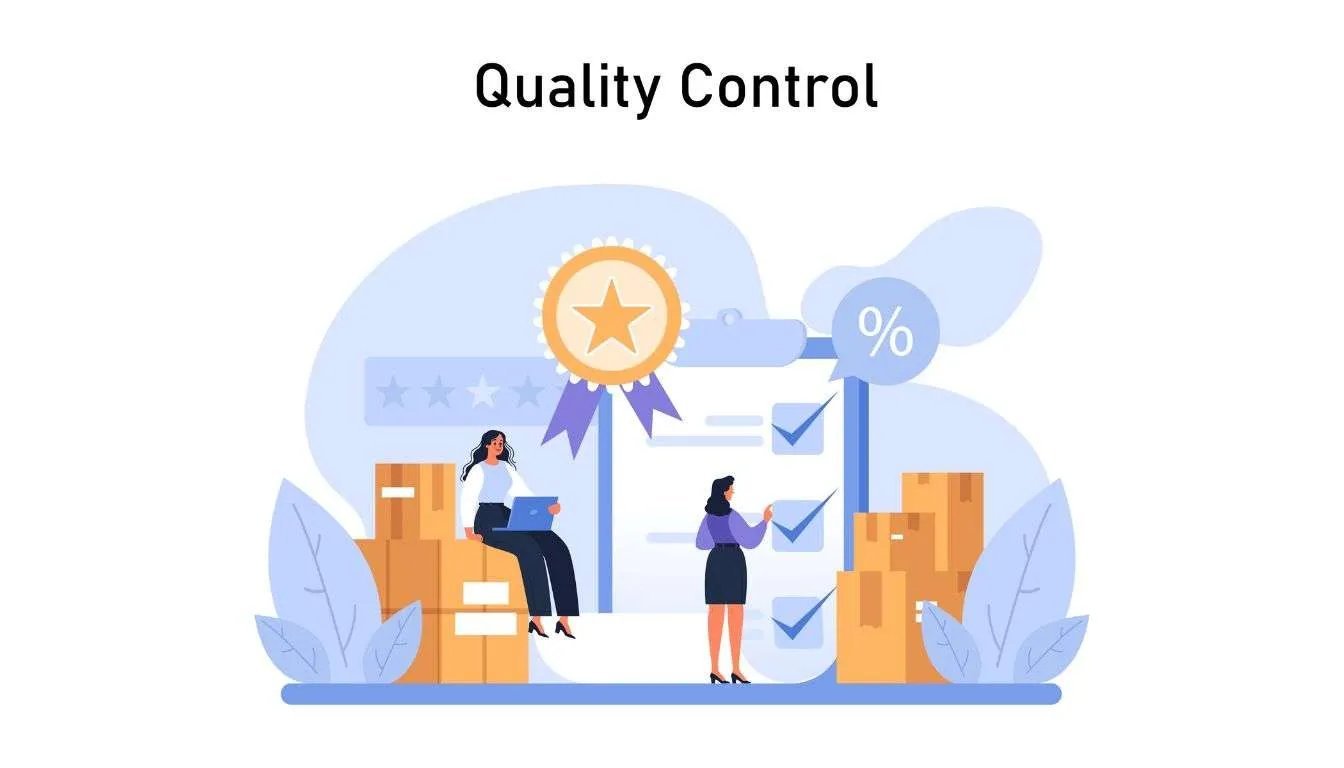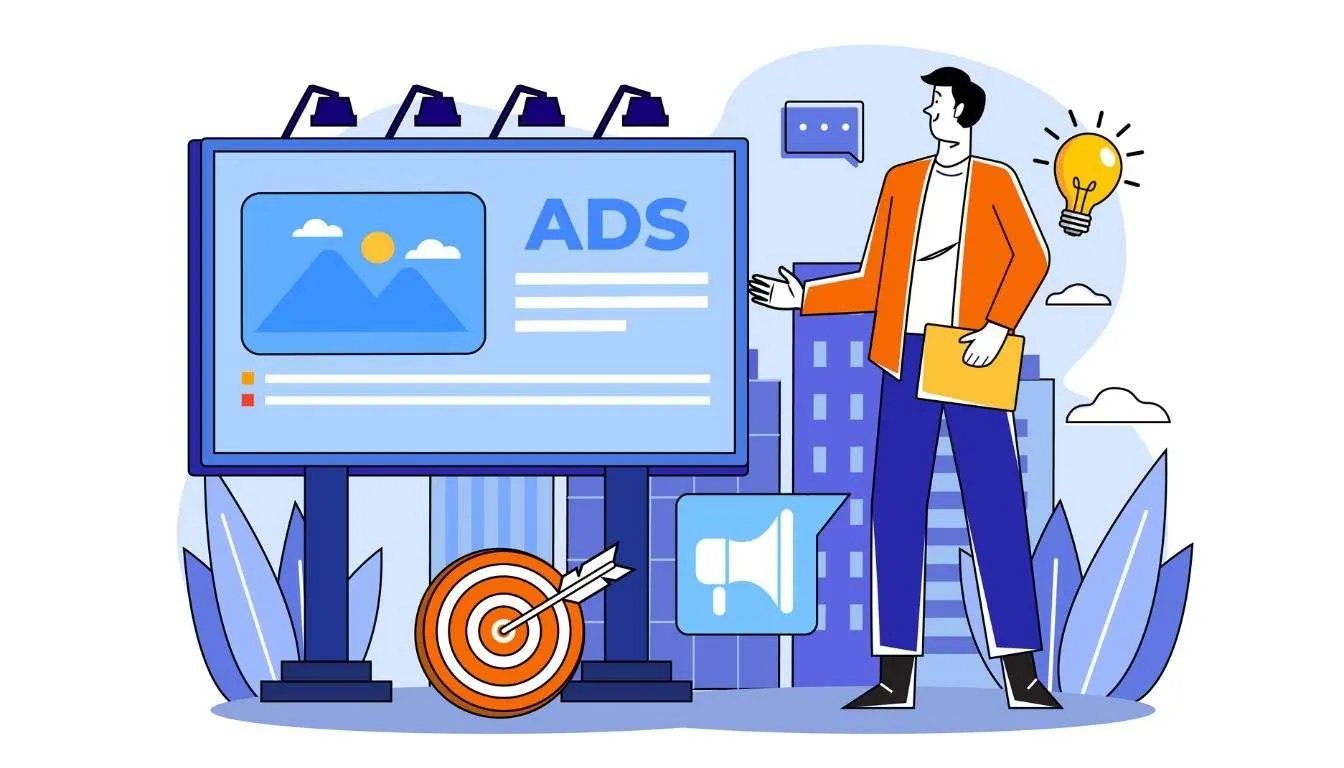Affiliate Disclaimer: Some of the links on this site are 'affiliate links.' This means if you click on the link and purchase the item, we may receive an affiliate commission.
Affiliate marketing can be an exciting way to earn online, especially for beginners eager to explore ways to generate passive income. But with all the possibilities, it’s easy to fall into traps that can hold you back. Small mistakes, like choosing the wrong products or ignoring your audience’s needs, can quickly derail your progress. The good news? Most of these slip-ups are completely avoidable with the right mindset and approach. By identifying common pitfalls early on, you’ll save time, build trust with your audience, and set yourself up for long-term success. Let’s make sure you start off strong and avoid the mistakes that could cost you more than just a commission.
Key Takeaways
- Skipping research is a big mistake. Take the time to understand your niche and audience first.
- Picking the wrong affiliate products can hurt your credibility. Promote things you truly believe in and that your audience will value.
- Neglecting quality content is a no-go. Focus on creating useful, engaging posts that solve real problems for your readers.
- Overloading with affiliate links can scare people off. Use links sparingly, and always be upfront about your relationships.
- Ignoring SEO basics can cost you traffic. Optimize your content for search engines with the right keywords and clear structure.
- Not tracking performance means you’re guessing what’s working. Use analytics to fine-tune your strategy.
- Quitting too soon is common. Affiliate marketing takes time, patience, and consistent effort, so stick with it.
YouTube video for additional insights: 5 Affiliate Marketing MISTAKES Beginners Make (that lose $$$!)
Failing to Choose a Niche
Affiliate marketing may seem straightforward—you find products, promote them, and collect commissions. But if you’re trying to cater to everyone, you’ll likely end up reaching no one. Choosing a niche is the foundation for connecting with the right audience and growing your affiliate business.
Why Niches Matter in Affiliate Marketing
Imagine walking into a bookstore. Would you trust a section labeled “Everything” over one labeled “Best Sci-Fi”? Probably not. The same applies to affiliate marketing. By focusing on a niche, you position yourself as the go-to expert for a specific audience.
A well-defined niche allows you to build authority. When your audience sees you consistently sharing valuable information about a specific subject, they trust you more. This trust translates to higher click-through rates and conversions, which ultimately means more success for your affiliate efforts. Plus, a niche focus creates a laser-targeted audience. Instead of wasting time speaking to people who don’t care about what you promote, you’re engaging with those who actually do.
For more insights into the importance of picking the right niche, check out this guide from Affilorama, which explains how narrowing down your focus creates deeper connections with your audience.
Tips for Choosing the Right Niche
If you’re stuck wondering where to start, don’t worry. Finding the perfect niche isn’t about guessing—there’s a method to the madness. Keep these tips in mind to land on a profitable and enjoyable territory for your affiliate marketing efforts:
- Follow Your Passions
Pick a niche that genuinely excites you. If you despise health supplements, promoting them will feel like a chore. On the flip side, when you’re passionate about technology, for example, discussing the latest gadgets can be a breeze. - Research Market Trends
Use tools like Google Trends or social listening platforms to identify markets that show consistent growth. Pay attention to what people are already searching for. For example, niches like fitness tech and eco-friendly products are on the rise. This article on LiveChat explains how high-demand niches can set you up for lasting success. - Check Profit Potential
Passion is important, but profitability matters too. Look into affiliate programs within your niche. Are there enough products to promote? What do the commission rates look like? A balance between interest and earning potential is crucial. - Think About Your Audience
Take a moment to ask yourself: Who benefits from these products the most? If your niche doesn’t have a clearly defined audience, you’ll have difficulty scaling. - Evaluate Competition
A bit of competition is a good sign—it means your niche is in demand. However, if big players dominate, it may be tough to carve out your space. Look for gaps where you can offer unique value, whether it’s a specific product comparison or in-depth guides. Ahrefs offers a helpful breakdown for analyzing keywords related to affiliate niches to gauge competition.
By narrowing your focus and choosing a niche wisely, you’ll avoid becoming a jack of all trades and a master of none.
Promoting Low-Quality Products or Services
One of the biggest rookie mistakes in affiliate marketing is promoting products or services that don’t deliver on their promises. The allure of quick commissions can blind you, but in the long run, it’s a trap that damages your reputation and alienates your audience. You’re more than a salesperson—you’re a trusted guide. If you don’t take the time to pick quality products, why should anyone take your recommendations seriously? Let’s see how to ensure you’re promoting items that actually help your audience.

How to Vet Affiliate Products Effectively
Before you attach your name to a product or service, it’s critical to make sure it’s worth promoting. Think of it this way: Would you recommend a restaurant you haven’t even dined at? Probably not. The same thought process should apply to affiliate marketing. Here’s a step-by-step approach to vet products effectively:
- Read Reviews and Testimonials
Start by researching what others are saying. Look for verified customer reviews, testimonials, and case studies. These can indicate if a product has successfully solved the problems it claims to address. Take note of any recurring complaints or issues. Sites like Quora often have detailed user opinions that provide deeper insights. - Test the Product Yourself (When Possible)
If you can, try the product or service firsthand. This step helps you speak authentically about its benefits, downsides, and quirks. People can tell when you’re speaking from personal experience versus rattling off marketing jargon. Pro Tip: Many affiliate programs offer free trials or discounts for their partners—don’t hesitate to ask. - Evaluate Customer Support
A good product is nothing without excellent customer support. Test their response times. Ask a random question to see how helpful they are. If they’re treating customers poorly, that bad experience will be linked to you. - Research the Brand
Check the company’s track record. Do they consistently deliver quality? Are they ethical and transparent? A shady company can taint your reputation even if the product itself isn’t terrible. - Check Refund Policies
Does the product come with a refund or money-back guarantee? A trustworthy seller backs their offer with clear terms. If returns are nearly impossible, steer clear.
For more tips on promoting affiliate links legitimately, refer to this guide from Kit.
The Long-Term Effect of Product Quality on Trust
Let’s be clear: Trust isn’t something you build overnight. It’s like a bridge—constructed brick by brick over time. Promoting low-quality products, even once, is like taking a sledgehammer to that bridge. If you do that, you risk losing a sale and, more importantly, you risk your entire relationship with your audience.
Why? People follow you because they believe you have their best interests at heart. If your recommendations lead to frustration rather than value, they’ll think twice before clicking on your links again. Worse, the internet has a long memory. Negative reviews or comments about you can stick around, deterring future audiences.
On the other hand, sticking to products that consistently deliver value builds goodwill. This creates a cycle of trust—people are more likely to try what you recommend, and companies want to partner with you because of your reputation. A high-trust affiliate marketer is a sought-after one.
Remember, longevity breeds success in this business. Quality today means credibility tomorrow. For more on why trust matters in affiliate marketing, check out this breakdown on Winsavvy.
Overlooking SEO Best Practices
When it comes to affiliate marketing, SEO is the backbone of driving organic traffic to your site. Yet, many beginners overlook essential best practices, leaving clicks and commissions on the table. Whether it’s skipping proper keyword research or forgetting to optimize for mobile, these common blunders may be holding you back. Here’s how to recognize—and fix—these missteps.

Common SEO Mistakes Made by Beginners
Many new affiliate marketers start creating content without a solid SEO strategy. It’s understandable—SEO can feel overwhelming at first. But ignoring it is like putting up a billboard where no one can see it. These are some of the most frequent SEO errors you should look out for:
- Skipping Keyword Research
Keywords are the foundation of SEO. Many beginners choose keywords based on guesses instead of actual data. Without proper keyword research, you might target phrases nobody is searching for—or worse, phrases with massive competition. Tools like Ahrefs can help you pinpoint the right keywords for your niche. - Neglecting On-Page SEO
It’s easy to focus just on writing and overlook technicalities like meta titles, header tags, and image alt descriptions. These small elements might not seem like a big deal, but they help search engines understand your content. - Publishing Duplicate or Thin Content
If your content doesn’t offer unique, valuable insights, why would anyone stick around? Worse, duplicate content can confuse search engines and reduce your rankings. Make sure every post adds real value to your audience. - Ignoring Mobile Optimization
A large chunk of web traffic comes from mobile users. If your site loads slowly or doesn’t display properly on phones, you’re likely losing potential clicks and sales. Use Google’s Mobile-Friendly Test to ensure your site works seamlessly across all devices. - Poor Site Structure
A cluttered website frustrates visitors and search engines. Without a logical, easy-to-follow structure, it becomes difficult for bots to crawl and index your pages.
Want a more detailed breakdown of SEO pitfalls? Check out this guide on common SEO mistakes to spot and address errors before they cost you traffic.
Actionable SEO Tips for Affiliate Marketers
SEO doesn’t have to be complicated. By focusing on a few key strategies, you can see a noticeable improvement in your site’s traffic and conversions. Here’s where to start:
- Optimize Your Meta Titles and Descriptions
Think of meta titles as your content’s headline. They’re the first thing people see in search results. Make them compelling and include your target keyword. A clear and inviting meta description can also boost your click-through rate. - Prioritize Page Speed
Speed matters—a lot. Visitors are quick to leave if your site takes forever to load. Tools like Google’s PageSpeed Insights can help you pinpoint slowdowns. Compressing images and using a good hosting provider can work wonders for your speed. - Use Valuable Keywords Strategically
Once you’ve done your keyword research, sprinkle those phrases naturally throughout your content. Overstuffing your article with keywords can hurt your rankings, so focus on flow and readability. - Build Quality Backlinks
Backlinks act as votes of confidence for your site. Reach out to relevant websites for guest posting opportunities or collaborations. Resources like Post Affiliate Pro offer solid advice for building a strong link profile. - Create Engaging, Unique Content
Your content should address your audience’s questions or solve their problems. Whether it’s tutorials, reviews, or case studies, focus on being informative. This helps attract natural shares and backlinks, boosting your rankings organically. - Keep Your Website Mobile-Friendly
A responsive design ensures your site looks great on any device. Remember, Google prioritizes mobile-first indexing, so test how user-friendly your site is for phone users. - Analyze and Adjust Regularly
SEO isn’t a set-it-and-forget-it process. Use tools like Google Analytics to monitor traffic, bounce rates, and user behavior. Adjust your strategies based on what the data tells you.
By focusing on these fundamentals, you’ll create a site that doesn’t just exist but thrives in search rankings.
For more in-depth tips on how SEO can improve your affiliate marketing game, explore this guide from Intergrowth.
Ignoring Transparency with Your Audience
Honesty isn’t just a nice-to-have in affiliate marketing—it’s absolutely essential. If your audience doesn’t trust you, your recommendations will fall flat and your efforts might even backfire. Transparent communication builds bridges with your followers, plus it keeps you on the right side of legal requirements.
The Importance of Affiliate Disclosures
Affiliate disclosures are required. The Federal Trade Commission (FTC) mandates that anyone earning money through affiliate links must be completely upfront about it. The rule is simple: if you stand to gain from a recommendation, you need to say so.

Here’s what that means for you:
- Disclosures Must Be Clear and Conspicuous
Fancy wording like “This post may contain affiliate links” won’t cut it if no one notices it. Your audience shouldn’t have to scroll, dig, or squint to see your disclosure. Place it near the beginning of your content—whether it’s a blog post, Instagram caption, or YouTube description. Help your audience feel informed rather than misled. You can learn more about this rule in this explanation of the FTC’s disclosure guidelines. - Use Everyday Language
Be straightforward. Say something like, “I may receive a commission if you make a purchase through these links. It doesn’t cost you anything extra, but it does support my work.” You’re showing respect for your readers by being upfront—it’s a win-win. - Platform-Specific Requirements
Different platforms have different norms. On YouTube, for example, you can use a pinned comment or mention it in your video. On Instagram, make sure your caption includes #ad or similar language right at the top. Refer to this guide for examples and tips on tailoring your disclosures.
Failing to disclose your connections hurts your credibility, and it can lead to big fines. So why risk it?
Building Trust Through Honest Communication
Remember that time you found out someone wasn’t being upfront with you? Maybe a friend, a brand, or a restaurant review let you down. It stings, right? Now imagine your audience feeling that way because of your affiliate links. Trust is fragile, and rebuilding it is much harder than maintaining it.
Here’s how honesty helps you in affiliate marketing:
- Relationships Over Commissions
When you’re clear about why you’re recommending a product, it feels less like a sales pitch and more like advice from a friend. Your audience knows you’re earning a commission, but they’ll appreciate the transparency. Studies show that people are okay with affiliate links as long as they feel informed. For more insights, check out tips on ethical and honest marketing. - Only Recommend What You Believe In
Don’t promote something you wouldn’t use yourself. If you love a product, share why it works for you. For example, instead of saying, “This is a great camera,” try, “I use this camera because it’s lightweight and takes crisp low-light photos.” Specifics build credibility. Learn more about why honesty matters in this piece about authenticity in affiliate marketing. - Address Concerns Openly
Not every product is perfect, and that’s okay. If a product has minor drawbacks, mention them. This small dose of honesty shows that you prioritize your audience’s needs over just making a quick sale. People will trust your reviews even more.
Think of honesty as your secret weapon. When you’re open with your audience, you become their ally rather than just another marketer. And in a world full of ads, being authentic is like a breath of fresh air.
Creating Low-Quality Content
In affiliate marketing, content is your lifeline—it’s how you connect with your audience, provide solutions, and ultimately make sales. But when you focus on pumping out low-quality content for the sake of quantity, you’re setting yourself up for failure. Traffic dips, conversions plummet, and your audience starts walking away to find someone who offers genuine value. How do you avoid this trap? Let’s explore what makes high-quality affiliate content worth its weight in gold and the tools you can use to create it.
Characteristics of High-Quality Affiliate Content
When it comes to creating affiliate content, quality is essential. Imagine binge-watching a TV show with episodes out of order, incomplete plots, or fuzzy video quality. You’d lose interest, right? Your audience feels the same way when they encounter low-value content. Here’s what sets high-quality affiliate posts apart:
- Value-Driven
Your audience should walk away better informed, more prepared, or entertained. Every piece of content should solve a problem, answer a question, or provide insights they couldn’t find elsewhere. People have millions of options online—make sure your content stands out by being genuinely helpful. - Engaging and Relatable
Dry, robotic content turns readers away. Use a conversational tone, include real-world examples, and keep your language simple yet impactful. When your readers feel like you’re speaking directly to them, they’re more likely to trust you. - Well-Researched
Back up your affiliate recommendations with facts. Include industry stats, personal experiences, or customer testimonials to show why the product or service is worth their time and money. This builds validity and trust. - Clear Structure
Use subheadings, bullet points, and short paragraphs to make your content easy to read. Nobody wants to dig through a wall of text to find what they need.
Want more traits of effective affiliate marketing content? Check out this guide from Outbrain for practical tips on content that drives engagement and clicks.
Tools and Tips for Producing Better Content

Creating high-quality content doesn’t mean working harder—it means working smarter. With the right tools and strategies, you can produce polished, engaging affiliate posts that readers love. Here are some essentials to make your content shine:
- Grammar and Readability Checkers
Let’s be honest—typos and clunky sentences are dealbreakers. Tools like Grammarly spot grammatical errors while improving sentence structure for an easier read. For fine-tuning readability, consider platforms like Hemingway Editor to make your text crisp and straightforward. - Content Planning Tools
Planning your content calendar ensures consistency. Platforms like Trello or Asana let you map out ideas, schedules, and deadlines so you never miss a chance to connect with your audience. If you prefer something more detailed, Zapier’s guide to content marketing tools has excellent recommendations. - Keyword and Competitor Research
Tools like Ahrefs or SEMrush help you identify topics your audience is already searching for while analyzing what your competitors are doing well. By addressing these gaps, you can carve out unique content that resonates with readers. - Visual Content Creators
Visuals play a massive role in boosting audience retention. Tools like Canva make it simple to create eye-catching designs for infographics, blog banners, and social media posts. For beginners, this resource on easy content tools is a must. - Analytics Tools
Tracking what works ensures that you’re always improving. Use Google Analytics or similar platforms to monitor the performance of your affiliate content. This data helps you refine your strategy and double down on what’s working.
Ultimately, great content is a mix of creativity and strategic execution. By focusing on quality rather than churning out post after post, you’ll create a loyal audience that values your insights—and that translates to better affiliate conversions.
Neglecting Mobile Optimization

In the world of affiliate marketing, ignoring mobile users is like turning away half of your potential audience. Picture this: someone finds your site, clicks on your affiliate link, but the page takes forever to load or looks like a puzzle with missing pieces on their phone. That’s a lost sale, plain and simple. With mobile devices driving most of today’s web traffic, failing to optimize for mobile is one mistake you can’t afford to make.
Why Mobile Optimization is a Must
Mobile traffic is now at the forefront of internet usage, making up over 55% of global website traffic. And this number is climbing every year. Think about it—whether you’re waiting in line, commuting, or lounging on the couch, the easiest device to grab is your phone. This behavior mirrors how people interact with websites, including your affiliate marketing pages.
For affiliate marketers, this is a game-changer because most buying decisions aren’t made on desktop anymore. If your site isn’t mobile-friendly, potential commissions are slipping through the cracks. Mobile-friendliness also directly impacts your SEO. Google uses mobile-first indexing, meaning your website’s mobile experience heavily influences how it ranks in search results. If your site isn’t optimized, your traffic will take a nosedive, and your affiliate efforts will feel the sting.
Research supports just how critical this is. For instance, mobile conversions outpace desktop conversions by a solid margin in eCommerce settings, with mobile commerce projected to hit $710 billion by 2025. A seamless mobile experience isn’t just a “nice-to-have”; it directly drives results. This article explains how a mobile-optimized site impacts everything from user behavior to brand trust.
Steps to Optimize Your Website for Mobile
So how do you avoid alienating mobile users? It’s easier than you think with a few practical steps. Let’s make sure your website looks and feels just as good on a smartphone as it does on a desktop.
- Use a Responsive Design
A responsive design ensures your website adapts automatically to different screen sizes, whether it’s a tablet, smartphone, or desktop. This not only improves user experience but also boosts your rankings in search engines. Tools like WordPress themes and page builders often come with built-in responsive settings. - Test Your Site Speed
Mobile users are impatient—if your site takes longer than 3 seconds to load, most people will bounce. Use tools like Google’s PageSpeed Insights to pinpoint what’s slowing things down, such as uncompressed images or excessive plugins. Compress your media files and consider using a reliable content delivery network (CDN) to speed things up. - Improve Navigation
On a small screen, navigation can make or break usability. Simplify your menu, use larger buttons that are easy to tap, and ensure important information is visible without needing to dig. Think about how shoppers interact when they’re on the go—they want clarity, not confusion. - Focus on Core Web Vitals
Google now considers Core Web Vitals—like loading speed and interactivity—as ranking factors. Check metrics like LCP (Largest Contentful Paint) and CLS (Cumulative Layout Shift) to ensure your site delivers a smooth experience. Learn more about mobile UX improvements here. - Test on Real Devices
Simulators can only get you so far. Test your website on actual phones and tablets to spot any issues. Pay attention to font size, image scaling, and touch sensitivity. Did you know misaligned buttons can frustrate users enough to leave? It’s small details like these that make a big difference.
By following these steps, you’ll provide a smooth, enjoyable experience for users no matter how they find your site. And happy users? They convert better and stick around longer.
Remember, in affiliate marketing, optimizing for mobile is essential. Ignoring it could cost you clicks, sales, and ultimately, trust from your audience. For more tips on standing out with mobile-first affiliate marketing tactics, this guide is worth exploring.
Not Tracking Performance Metrics
In affiliate marketing, running blindly without measuring your progress is like trying to bake a cake without checking the recipe—you’re just hoping it turns out fine, but it usually doesn’t. Metrics are your guide, showing you what works, what doesn’t, and where you need to adjust. By keeping track of performance data, you’re uncovering the story your business is telling. Let’s explore why tracking your performance metrics matters and how analytics tools can set you on the path to success.

Key Affiliate Marketing Metrics to Track
Tracking performance metrics is about understanding the story behind each click, conversion, and sale. But what exactly should you track? These are the must-follow metrics:
- Conversion Rate (CR):
This is the percentage of people who take the desired action after clicking your affiliate link. Whether it’s purchasing a product or signing up for a newsletter, your conversion rate tells you if your strategy actually works. - Click-Through Rate (CTR):
Measuring the percentage of people who click on your link compared to the number of impressions it receives. A low CTR could mean your content or call-to-action (CTA) needs a boost. - Return on Investment (ROI):
ROI helps you evaluate the profitability of your campaigns. It’s calculated as the revenue generated minus the costs, divided by the costs. A positive ROI means your efforts are paying off, while a negative one signals the need for improvement. - Average Order Value (AOV):
This tells you how much, on average, each customer spends through your affiliate links. Tracking AOV can help identify opportunities to promote higher-ticket items or suggest upsells. - Customer Lifetime Value (CLV):
While harder to calculate, CLV shows the value a customer brings over the entirety of their relationship with a brand. It’s a good long-term health indicator for your affiliate partnerships.
Want an in-depth perspective on more affiliate metrics you should track? This guide breaks it down with simple examples.
Using Analytics Tools Effectively
Once you know which metrics to track, the next step is finding the right tools to do the heavy lifting. Analytics platforms collect data and transform it into actionable insights. Here’s how you can use them effectively:
- Set Up Google Analytics the Right Way
Google Analytics is like an all-seeing eye for your campaigns. By setting up goals and custom reports, you can see where your traffic is coming from, which pages perform best, and how users engage with your links. Need a step-by-step guide? This resource offers a clear walkthrough. - Use Dedicated Affiliate Tracking Platforms
Tools like PartnerStack or Tapfiliate are designed specifically for affiliates. They allow you to track sales, commissions, and even individual performance across different programs—all without juggling spreadsheets. - Leverage Heatmaps
Ever wonder how visitors interact with your pages? Heatmap tools like Hotjar show you exactly where users click, scroll, and linger. This insight helps you optimize your content for better conversions. - Regularly Review Your Data
Don’t just set it and forget it. Make it a habit to review your analytics weekly or monthly. Patterns may emerge that could spark new strategies or point out areas to fix. For example, are users dropping off after clicking a link? Maybe the landing page isn’t compelling enough.
Struggling to understand how all these analytics come together? This article on data tools explains how businesses turn overwhelming data into simple, digestible insights.
By tracking the right metrics and using analytics tools to interpret them, you’ll have the map you need to scale your affiliate marketing business systematically. The best part? These insights save you time and also maximize every effort you make, turning each click into a step toward success.
Common Questions About Avoiding Beginner Mistakes in Affiliate Marketing
What’s the most common mistake new affiliate marketers make?
The biggest mistake is expecting quick results. Many beginners think they’ll make money right away, but affiliate marketing takes time, testing, and patience. Set realistic expectations and focus on learning what works for your chosen niche.
How do I pick the right affiliate offers?
Choosing the wrong offer is a frequent issue. Start by researching what your audience needs or wants. Avoid selecting offers just because they have high payouts—go for ones that match your niche and provide real value.
Why aren’t my campaigns converting?
This often happens if you’re only linking directly to offers without using a landing page. Creating a custom landing page that aligns with the offer builds trust and increases conversion rates. It’s worth investing time in the design and content.
Is it bad to switch campaigns too quickly?
Yes, optimizing too quickly is a mistake. Give your campaigns at least 3–5 days to collect data before making changes. If you adjust too soon, you might overlook strategies that could work with a little tweaking.
What’s the role of proper tracking in affiliate marketing?
Not using tracking tools is a major rookie error. These tools let you see what’s working and what’s not, so you can make informed changes rather than guessing. Tracking data like clicks, conversions, and ROI is essential for growth.
How important is niche selection?
Your niche is everything. If you pick a niche that’s oversaturated or one you don’t understand, you’ll struggle. Alternatively, a highly specific niche with demand but less competition can set you up for success.
Can you fail by promoting too many products?
Absolutely. Promoting every product under the sun confuses your audience and makes you seem less credible. Stick to a small selection of products that align with your expertise and audience’s interests. Focus on quality, not quantity.
Should I avoid free traffic sources like social media?
Social media can work, but relying on it alone often leads to slow progress. Pair free methods with paid advertising for steady traffic. Commit to learning how to use both effectively.
Why do some beginners skip landing pages, and should they?
Many skip them to save time or money, but it’s a mistake. Landing pages help improve conversions because they give context to the product. Even a basic page can make a huge difference to your results.
How do unrealistic expectations lead to failure?
People often quit too early because they think affiliate marketing is an overnight success scheme. In reality, you’ll spend weeks or even months testing and optimizing before getting consistent profits. Patience and persistence are key.
How can I avoid wasting money on ads?
Start small. Test a single campaign with a small budget, track your results, and scale gradually. Starting with a large budget before understanding your audience or platform often leads to big losses.
Is email marketing really necessary for beginners?
It might seem daunting, but email marketing is a powerful tool. It builds a relationship with your audience and provides opportunities for recurring sales. Start simple with a free email marketing tool if you’re on a tight budget.
How can beginners compete with seasoned affiliate marketers?
Start by focusing on areas with less competition, like Tier 2 or Tier 3 geographical markets, or smaller niches. Use your unique voice to connect with your audience. Everyone starts somewhere—don’t let the competition discourage you.
When should I invest in tools like tracking software or spy tools?
Investing early can save you time and money in the long run. Tools like trackers let you optimize campaigns properly, while spy tools offer insights into what’s working for others. Your first profits can help cover these expenses.
How do I stay motivated when results are slow?
Remember that most affiliate marketers don’t succeed immediately—it’s a process. Celebrate small wins, learn from mistakes, and remember why you started. Consistency and adapting to what you learn are your best strategies for long-term success.
Final Thoughts
Affiliate marketing is a journey, not a sprint, and even small tweaks to your strategy can make a big difference. Mistakes like promoting poor-quality products, ignoring SEO, or failing to track your metrics don’t just cost you commissions—they can take away trust and future opportunities. Fortunately, you have the tools and knowledge to avoid these missteps.
Put yourself in your audience’s shoes, prioritize genuine value, and focus on building relationships over quick wins. The key is to stay transparent, create meaningful content, and commit to learning from data. By steering clear of these common pitfalls, you’re setting yourself up for real, lasting success.
Now it’s your turn—what’s one mistake you’ve overcome, or which of these do you plan to tackle first? Share your thoughts or questions, and let’s keep growing together!

